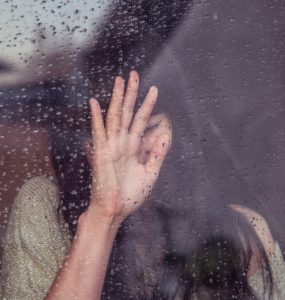Suicide and Assisted Suicide: Two Sides of the Same Crisis
If we give up the fight against assisted suicide, we will lose the fight against suicide, too.
A crisis of meaning
Last month we mourned fashion designer Kate Spade and television chef Anthony Bourdain, who both ended their own lives unexpectedly. These celebrity suicides have since sparked a national conversation about mental health and how to provide support for those who suffer from depression and suicidal thoughts.
The sad truth is that Spade and Bourdain are not the outliers we might think. According to recent statistics, suicide rates rose dramatically across the United States between 1996 and 2016, up more than 30 percent in half of the states. It is fair to say suicide is now a public health crisis.
But increases in suicide cannot be reduced to a lack of access to mental health services— even as more and more people seek and receive treatment for things like depression and anxiety. Rather, it seems the shadow of existential despair is lengthening over our society. This is a crisis, not of access, but of meaning, caused (at least in part) by greater social isolation and a weaker sense of personal belonging.
Two connected crises: suicide and assisted suicide
Meanwhile, the data shows a similar spike in assisted suicide. More people are choosing to kill themselves with lethal prescriptions—30% more in Canada just in the second half of 2017. While proponents of assisted suicide continue to justify the practice as relieving unmanageable pain, an overwhelming majority of those who choose assisted suicide do so because of depression, psychological distress, and fear. Data from Oregon and Washington demonstrate that as well.
Here’s the point. The reasons why people like Spade and Bourdain kill themselves—depression, despair, isolation—are the same reasons why people choose assisted suicide. But our society seems concerned with fighting only the former, while the latter is defended as the “right to die”.
From a tragedy to a human right?
Cultural acceptance of suicide is just the next logical step once we accept assisted suicide. When personal autonomy becomes the highest virtue at the end of life—to the point where self-destruction is sold as an expression of self-determination—suicide can no longer be judged a tragedy. On the contrary, it becomes an unalienable right of the individual. Follow this logic a step further and the results include the specter of “suicide cults,” currently on the rise in Europe, which eliminate the mediation of the medical industry altogether.
If we are serious about fighting suicide, then we cannot tolerate assisted suicide, either. Studies show that in places where assisted suicide is on the books, suicide rates increase across the board—due in part, perhaps, to the way that legalizing assisted suicide changes cultural attitudes towards suicide, making it seem like a more rational, and even a noble, choice.
Protecting against assisted suicide in Minnesota
Here in Minnesota, we have already seen legislators attempt to pass assisted suicide bills. Compassion & Choices, the bills’ biggest promoter, has moved from language of compassion (“Minnesota Compassionate Care Act”, 2016) to the language of autonomy and choice with the 2017 “Minnesota End-of-Life Options Act” (SF 1572). Their strategy is to argue that suicide should be a choice that is protected by the law. And if we enshrine such a belief in our state’s laws, it is one short step to making all suicide—whether for the terminally ill or the young and healthy—a right that must be protected rather than a tragedy that must be prevented.
As Minnesotans, we must re-commit to fight against suicide in all its forms by opposing assisted suicide legislation in our state.
